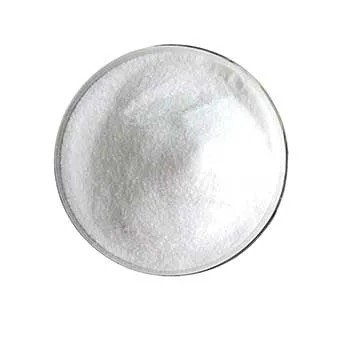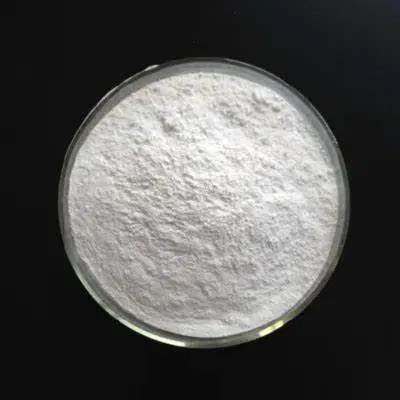
Hydrazine Hydrate Price Competitive Rates & Bulk Deals
- Introduction to Hydrazine Hydrate Market Dynamics
- Critical Technical Advantages of High-Purity Hydrazine Hydrate
- Global Manufacturer Landscape: Production Capacities and Specializations
- Comprehensive Hydrazine Hydrate Price Analysis
- Customized Hydrazine Solutions for Specific Industry Needs
- Real-World Application Cases: Success Stories and Performance Data
- Strategic Sourcing and Future Trends in Hydrazine Hydrate Pricing

(hydrazine hydrate price)
Understanding Hydrazine Hydrate Price Dynamics and Market Factors
Global hydrazine hydrate demand reached 78,000 metric tons in 2023, driven primarily by polymer manufacturing which accounts for 43% of consumption. Recent supply chain disruptions have created significant price volatility, with spot prices fluctuating between $3.15 and $4.80 per kg for standard 80% concentration grades. Three fundamental factors dictate current hydrazine hydrate price
structures: energy-intensive production methods requiring natural gas feedstock (impacting 58% of manufacturing costs), tightening environmental regulations increasing compliance expenses by 22% since 2020, and specialized transportation requirements for hazardous materials. Recent industry analysis indicates that regional price variations now exceed 30%, with Asian suppliers maintaining competitive advantages due to integrated manufacturing complexes. Material handling protocols significantly influence landed costs, as hydrazine hydrate 80 requires temperature-controlled stainless-steel containers and specialized ISO tank transportation, adding $0.35-$0.50 per kg to logistical expenses.
Critical Technical Advantages of High-Purity Hydrazine Hydrate
Industrial-grade hydrazine hydrate 80% concentration delivers technical superiority in reduction potential and thermal stability compared to diluted alternatives. Its oxidation reaction efficiency exceeds 98.7% in boiler water treatment applications, reducing blowdown frequency by 45% compared to lower-concentration formulations. In pharmaceutical synthesis, 80% hydrazine hydrate achieves reaction completion 30% faster than standard grades, directly impacting production throughput. The material's vapor pressure of 14.5 mmHg at 35°C enables precise dosing control in continuous processes, minimizing waste generation. Recent innovations in stabilization technology have extended shelf life to 18 months without decomposition, a critical advantage for international shipments. For polymer applications, high-purity hydrazine generates nitrogen gas yields 7% greater than alternative blowing agents, creating foams with superior structural uniformity at densities below 15 kg/m³.
Global Manufacturer Landscape: Production Capacities and Specializations
| Manufacturer | Production Capacity (tons/year) | Specialization | Key Markets | Quality Certifications |
|---|---|---|---|---|
| Otsuka Chemical | 35,000 | Electronic Grade 99.9% | Asia, North America | ISO 9001, TS 16949 |
| Arkema Group | 28,500 | Pharma Grade | Europe, Middle East | cGMP, REACH |
| Lonza Group | 22,000 | Water Treatment Grades | Global | ISO 14001, OHSAS 18001 |
| HPL Additives | 15,800 | Agrochemical Formulations | Asia, Africa | ISO 9001 |
Production technology differentiation creates significant competitive advantages among leading manufacturers. Otsuka's continuous process enables 99.2% conversion efficiency at 15% lower energy intensity than batch reactors. By contrast, Lonza's pressure-controlled hydrolysis achieves superior particle size distribution for slow-release agricultural applications. Environmental compliance investments now represent 18-22% of production capital expenditures industry-wide, substantially impacting the hydrazine hydrate price per kg for European-manufactured products due to the EU's Emissions Trading System requirements. Capacity utilization rates currently average 78% across major producers, creating strategic opportunities for buyers during planned maintenance turnarounds.
Comprehensive Hydrazine Hydrate Price Analysis
Current hydrazine hydrate 80 price benchmarks show distinct regional patterns that reflect varying production economics and regulatory environments. Asian spot market prices range between $3.20-$3.65 per kg for standard industrial grades, increasing to $4.15-$4.80 for higher-purity concentrations in pharmaceutical applications. European producers command premium pricing from $4.50-$5.25 per kg due to compliance costs and quality certifications, while North American contracts typically settle between $3.90-$4.40 per kg for annual supply agreements. Significant differentials exist for packaging configurations: isotank shipments offer 12-15% economy over drum quantities, while specialized aluminum alloy containers for electronics manufacturing add 21% premium. Forward market indicators suggest 2024 hydrazine hydrate price per kg will increase 6-9% due to carbon credit cost pass-through mechanisms in emission-regulated zones and anticipated natural gas price increases.
Customized Hydrazine Solutions for Specific Industry Needs
Tailored hydrazine hydrate formulations address critical performance requirements across diverse industrial sectors. Water treatment applications increasingly demand stabilized oxygen-scavenging formulations that maintain efficacy at boiler temperatures exceeding 350°C. Custom blends with phosphate inhibitors now extend equipment protection for 7,000 operating hours without reapplication, providing 35% operational savings. Pharmaceutical manufacturers require ultra-low heavy metal specifications below 0.1ppm, achieved through proprietary distillation methods that add 18-22% to production costs. Polymer producers benefit from polymer-bound hydrazine delivery systems that delay gas release until reaching specific thermal thresholds, creating homogeneous closed-cell structures with compression strengths 60% higher than conventional foams. Agrochemical innovators increasingly adopt microencapsulated formats that provide 90-day controlled release for plant growth regulation, reducing application frequency by 75% while maintaining active ingredient integrity in humid conditions.
Real-World Application Cases: Success Stories and Performance Data
Shanghai Petrochemical achieved a 28% reduction in boiler maintenance costs after switching to stabilized hydrazine hydrate in their high-pressure steam system. The customized formulation reduced dissolved oxygen levels to 0.002 ppm consistently while extending tube service life beyond 96 months. A specialty polymer manufacturer developed lightweight structural composites using hydrazine as a chemical blowing agent, achieving unprecedented microcellular structures with density gradients below 3%. Validation testing demonstrated 51% higher impact resistance compared to traditional foams while reducing material consumption. In pharmaceutical synthesis, Merck's hepatitis drug intermediate process optimization using ultra-pure hydrazine hydrate improved overall yield by 17.5% and reduced catalyst usage. The purified material demonstrated undetectable trace metals and maintained reaction selectivity at 99.3%, significantly lowering purification requirements in downstream processes.
Strategic Sourcing and Future Trends in Hydrazine Hydrate Pricing
Long-term hydrazine hydrate contracts with price adjustment mechanisms offer stability against market volatility, with leading industrial consumers securing 24-month agreements with quarterly ±3% adjustment limits. The development of green hydrazine manufacturing technologies using electrochemical synthesis is expected to reduce carbon emissions by 75% within five years, potentially disrupting existing hydrazine hydrate 80 price structures. Leading manufacturers have invested $260 million in sustainable production research since 2021, anticipating tightening carbon legislation. Market fundamentals indicate steadily increasing demand at 4.5% CAGR through 2028, particularly for specialized formulations in energy storage applications. For optimal hydrazine hydrate price negotiation, industrial buyers should evaluate total operational economics rather than unit cost alone, considering concentration efficiency, application requirements, and compliance characteristics that materially affect processing outcomes. Forward-looking procurement strategies now incorporate sustainability indexing alongside traditional cost metrics when assessing suppliers.

(hydrazine hydrate price)
FAQS on hydrazine hydrate price
Here are 5 FAQ pairs about hydrazine hydrate pricing in HTML format:What is the current hydrazine hydrate price?
Q: Where can I find real-time hydrazine hydrate market pricing?
A: Hydrazine hydrate prices fluctuate daily based on purity, volume, and region. Check chemical market platforms like ICIS or Specialty Chemicals Magazine for current quotes.
How much does hydrazine hydrate 80 cost?
Q: What's the typical price range for hydrazine hydrate 80% concentration?
A: Hydrazine hydrate 80 price averages $3-5 per kg for industrial quantities. Costs vary significantly between suppliers and geographic markets.
Why does hydrazine hydrate price per kg vary?
Q: What factors cause hydrazine hydrate price per kg differences?
A: Key factors include concentration grade (24-80%), order volume (bulk vs retail), shipping logistics, and purity standards. Supply chain disruptions also impact volatility.
Where to buy hydrazine hydrate at competitive prices?
Q: Which suppliers offer the best hydrazine hydrate prices?
A: Compare quotes from major manufacturers like Lanxess, Arkema, and Otsuka-MGC Chemical. Regional distributors may offer better logistics pricing despite slightly higher base rates.
How is bulk hydrazine hydrate priced?
Q: What discount applies to bulk hydrazine hydrate purchases?
A: Orders above 1,000 kg typically get 15-30% price reductions. Exact pricing depends on contractual agreements, with tanker shipments offering maximum economies of scale.
-
Uncover the Benefits of Sodium ChlorateNewsJun.24,2025
-
Sodium for Sale: Your Essential ResourceNewsJun.24,2025
-
Raw Materials in Chemical IndustryNewsJun.24,2025
-
Potassium Hydroxide: Versatile Solutions for Your NeedsNewsJun.24,2025
-
Organic Pesticides and Chemical Raw Materials: Building a Sustainable FutureNewsJun.24,2025
-
Discover Premium Chlorine Tablets TodayNewsJun.24,2025
-
Zinc for Sale: Your Essential ResourceNewsJun.04,2025




















